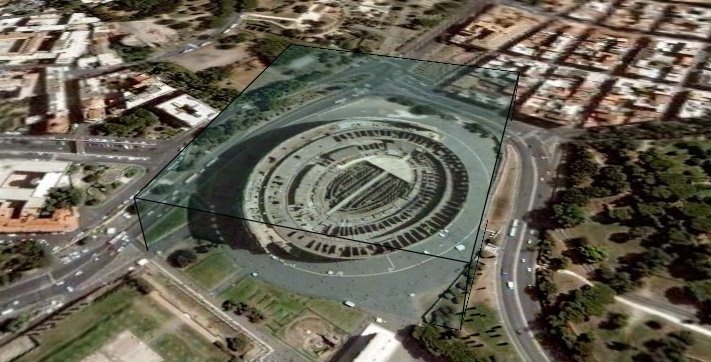He also posted a video of his sculpture just so you can see it in real time, although I would recommend you download the kmz file below to get a better look at the glass sculpture.
And here's one more example of a glass sculpture which he again, encloses the Golden Gate Bridge in San Francisco, CA into a tube:
Again, a video he posted of the glass tube enclosing the bridge in the worst quality possible. Just download the kmz file below.
Please download Google Earth as well if you going to check out the kmz files:
Although from looking at his blog, it hasn't been updated since so instead, he went up to having his own website, where he hosts his own works, including new works for Google Earth. He is Italian, so be sure to have a web browser that can translate foreign languages. He now utilizes Google Earth for marketing strategies, which in a sense could be applied to advertising your own product for example, in a geographical area to present the product you're aiming to. Pivari.com
From speculating how he considered himself on his blog to be the, ". . .first worldwide artist that uses Google Earth for internet installations." It's pretty tough to find any statement on why he created these glass sculptures and placed it in famous landmarks, but I would consider the idea of having a landmark or monument enclosed as a way of expressing that since glass is transparent. One could assume that it would be a response of the public wanting to protect these precious monuments for generations, which he encases them into glass enclosures, but the reality is that they will age overtime and will never look the same as we would see it now.
The idea can be applied to a dead person in a glass coffin, where the person can be seen visibly to the naked eye, but we know that overtime, that person in the coffin has a biological half-life, which ideally the person would technically disintegrate.
When I look at this photo of Ferdinand Marcos, former President and dictator of the Philippines, with the widowed Imelda Marcos kissing the glass coffin, it's an eerie image because it almost looks like she too looks dead. I can empathize with her that her loved one died, although the fact that Ferdinand had a history of siphoning millions of dollars from the U.S. overseas working program he installed just so he could be rich, makes me disappointed that he would be almost martyred by placing his body into an visible coffin. The idea that we eulogize the dead by enclosing them in a visible glass casket, it's a wonder that it's mostly reserved for the most influential of history in public space.



No comments:
Post a Comment